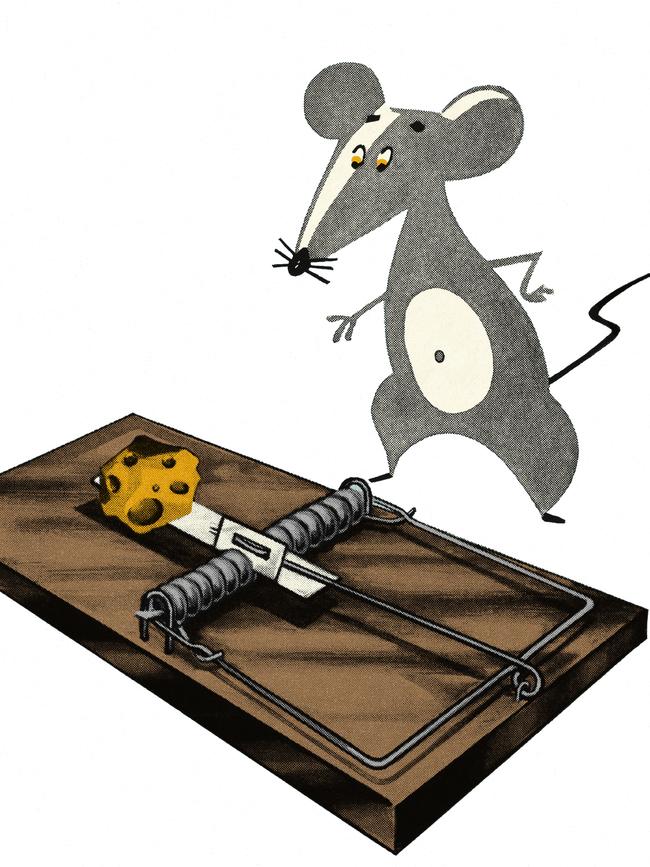Why self-managed super funds are trapped when it comes to loans

Once a growth area, banks went cold on lending to SMSFs about five years ago.
A spike in bad loans in regional areas that experienced falling property values which coincided with the banking royal commission led major banks to abandon the SMSF loan market in an attempt to reduce risk off their books.
Sydney-based mortgage broker Wayne Dive from Mortgage Choice says: “The banks that used to lend to SMSFs, such as St George and Macquarie, simply refuse to review interest rates on SMSF loans for existing customers.
“And for the past few years, the pathway for an existing SMSF borrower to refinance their debt has been very narrow, with only a few lenders accepting refinance requests.”
There are thousands of “orphaned” SMSF customers whose lender does not provide SMSF loans anymore, nor does the bank really want them to stay on as a SMSF loan customer.
This has left SMSF trustees locked into SMSF loans that they simply cannot refinance and are fully exposed to all RBA cash rate increases plus any extra increase the lender wishes to impose.
SMSF Association chief executive Peter Burgess says: “Given the complexity of SMSF loans and limited recourse nature, it’s not unusual to see commercial lenders charging higher rates for these types of loans.
“In recent times we have seen an increase in the number of SMSF loan products being offered by non-bank lenders so we don’t believe competition, or lack of it, is itself driving up rates.”
Data from research agency Canstar shows that the interest rate on new SMSF loans differs from 6.69 per cent to 8.34 per cent depending on the lender. However, most SMSF loans are not “new” rather than the borrower has been linked with the loan for years.
Dive says: “I just reviewed a client with an older SMSF loan and their interest rate, which started below 5 per cent, is now above 9 per cent.”
But things are set to get better. “Most of the SMSF lenders are now willing to look at refinance deals,” he says.

“You just need to take into account the transaction costs which can be into the thousands when establishment fees, valuation fees and legal fees are factored in.”
A SMSF can borrow up to 80 per cent of the purchase price of a property. However, if the loan is limited to 60 per cent or less of the purchase value, the interest rate is likely to be much lower.
SMSF trustees who have built up equity in the SMSF property may benefit from a refinance if they can drop the loan to value ratio into a lower tier and achieve a lower interest reduction.
Unfortunately the opposite cannot occur and SMSFs cannot increase their loan borrowings against an existing property asset. Due to the nature of SMSF loans and superannuation law, there is no way for the SMSF to unlock property equity and increase the existing SMSF loan size.
The only option is to sell the SMSF property then purchase a new property.
Another strategy to potentially lower the SMSF interest rate is to use your home loan redraw or offset balance and “onlend” to your SMSF. However, the attractiveness of this approach is diminishing.
Burgess says: “Superannuation law allows loans to be sourced from related parties. However, to avoid hefty penalties, the terms of the loan must comply with ATO guidelines which, among other things, include the interest rate that must be charged by the related entity.
“While the interest rate charged by commercial lenders may appear to be much higher than the variable interest rate that can be charged under a related party loan, this discrepancy will be reduced from July 1, 2023 when, under the ATO’s guidelines, the minimum required variable interest rate for a related party loan is reset and will increase from 5.35 per cent to 8.85 per cent.”
In addition, taxation implications may eventuate. If the home loan interest rate is 6 per cent, and funds are “onlent” to the SMSF at 8.85 per cent, then the difference between the 8.85 per cent interest and the 6 per cent home loan rate would be classified as taxable income and subjected to income tax at the homeowner’s marginal tax rate.
Overall, the loan market for SMSF loans is opaque, and even after a thorough web search, it is difficult to locate all the possible lenders available for SMSF loans.
As the market is fragmented with many smaller lenders offering substantially differing loan products, SMSF lending is one area where it should be crystal clear that a mortgage broker will be of great value throughout the process to evaluate and advise on the options.
James Gerrard is principal and director of Sydney financial planning firm www.financialadvisor.com.au



A sharp rise in the official cash rate over the past year has not only caught out mum-and-dad mortgage holders, but self-managed super funds are also feeling the pinch because some are stuck in high interest SMSF loans which are approaching 10 per cent interest rates.